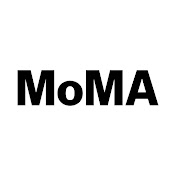
Nowshera, Kashmir (number 1000)
1864
Samuel Bourne
Samuel Bourne (British, 1834–1912)
Photography
Nowshera, Kashmir (number 1000), 1864. Samuel Bourne (British, 1834–1912). Albumen print from wet collodion negative; image: 24 x 29.5 cm (9 7/16 x 11 5/8 in.); paper: 24 x 29.5 cm (9 7/16 x 11 5/8 in.); primary mount: 27.5 x 33.8 cm (10 13/16 x 13 5/16 in.); secondary mount: 40.9 x 50.5 cm (16 1/8 x 19 7/8 in.). The Cleveland Museum of Art, Photography Discretionary Fund 2019.56 The Buniyar Temple in Navashera is an exceptionally well-preserved example of Kashmiri architecture, durable because it is made of granite rather than the more common limestone. It is believed to date back to the 8th century. For another view taken on the same day by the same artist, search for 1994.186 and glimpse the temple’s roof over the wall surrounding the area. Bourne, a banker who was also a passionate amateur photographer in England, became a professional photographer when he arrived in India in 1863.
- Maker/Artist
- Bourne, Samuel
- Classification
- Photograph
- Formatted Medium
- albumen print from wet collodion negative
- Dimensions
- Image: 24 x 29.5 cm (9 7/16 x 11 5/8 in.); Paper: 24 x 29.5 cm (9 7/16 x 11 5/8 in.); Primary mount: 27.5 x 33.8 cm (10 13/16 x 13 5/16 in.); Secondary mount: 40.9 x 50.5 cm (16 1/8 x 19 7/8 in.)
- Inscribed
- Inscription: Written in black ink on recto in lower left: “Bourne”
- Departments
- Photography
- Accession Number
- 2019.56
- Credit Line
- Photography Discretionary Fund
- Rights Statement
- CC0
Have a concern, a correction, or something to add?













